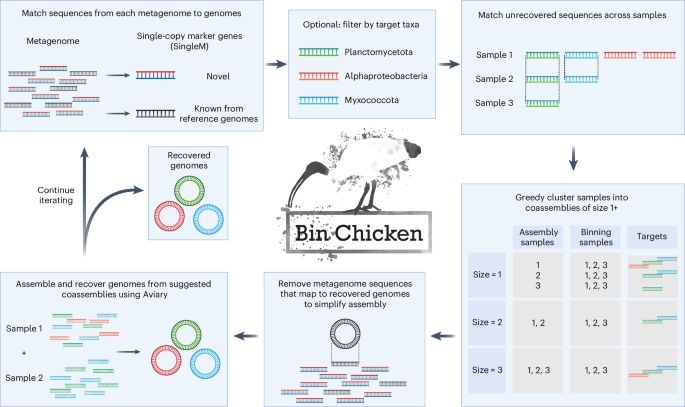
Author @preLights.bsky.social
Editor @ThePlantCell.bsky.social
Web: https://linktr.ee/somssich
Personal Account
Here's some content you might find interesting:
𝟏) My chapters of "𝐀 𝐒𝐡𝐨𝐫𝐭 𝐇𝐢𝐬𝐭𝐨𝐫𝐲 𝐨𝐟 𝐏𝐥𝐚𝐧𝐭 𝐒𝐜𝐢𝐞𝐧𝐜𝐞"
𝟐) My 𝐏𝐥𝐚𝐧𝐭𝐒𝐜𝐢𝐞𝐧𝐜𝐞𝐂𝐥𝐚𝐬𝐬𝐢𝐜𝐬 threads
𝟑) My threads on 𝐈𝐧𝐭𝐞𝐫𝐞𝐬𝐭𝐢𝐧𝐠 𝐒𝐜𝐢𝐞𝐧𝐭𝐢𝐬𝐭𝐬
𝟒) My Bluesky 𝐅𝐞𝐞𝐝𝐬 & 𝐒𝐭𝐚𝐫𝐭𝐞𝐫𝐏𝐚𝐜𝐤𝐬
𝟓) Some info on 𝐌𝐲 𝐎𝐰𝐧 𝐑𝐞𝐬𝐞𝐚𝐫𝐜𝐡
See all compiled Below 👇🧵

It was a pleasure to finally meet, learn about his #PlantImmunity & #ImmunoGenomics work to uncover evolutionary conserved defense mechanisms, & talk plant science. 👍🤓

It was a pleasure to finally meet, learn about his #PlantImmunity & #ImmunoGenomics work to uncover evolutionary conserved defense mechanisms, & talk plant science. 👍🤓
@kamounlab.bsky.social: “This is a milestone for UK science and innovation. We now have the regulatory framework to translate discovery into impact — improving crops, strengthening food security, and benefiting society” 🌿

@kamounlab.bsky.social: “This is a milestone for UK science and innovation. We now have the regulatory framework to translate discovery into impact — improving crops, strengthening food security, and benefiting society” 🌿
Bin Chicken: targeted metagenomic coassembly for the efficient recovery of novel genomes.
www.nature.com/articles/s41...

Bin Chicken: targeted metagenomic coassembly for the efficient recovery of novel genomes.
www.nature.com/articles/s41...
Check it out @nature.com
🌱 🌸 🧬 🔬
#bZIP #proteinphosphorylation @mpipz.bsky.social
rdcu.be/ePPjS

Check it out @nature.com
🌱 🌸 🧬 🔬
#bZIP #proteinphosphorylation @mpipz.bsky.social
rdcu.be/ePPjS

Cheng-Wei Sang, Yan-Mei Zhang, Sai-Xi Li, Jian-Qun Chen, and Zhu-Qing Shao in @cp-trendsplantsci.bsky.social.
#PlantScience #PlantImmunity
www.sciencedirect.com/science/arti...

Cheng-Wei Sang, Yan-Mei Zhang, Sai-Xi Li, Jian-Qun Chen, and Zhu-Qing Shao in @cp-trendsplantsci.bsky.social.
#PlantScience #PlantImmunity
www.sciencedirect.com/science/arti...
journals.plos.org/plosbiology/...

journals.plos.org/plosbiology/...
a 🧵 1/n
Drain: arxiv.org/abs/2511.04820
Strain: direct.mit.edu/qss/article/...
Oligopoly: direct.mit.edu/qss/article/...




a 🧵 1/n
Drain: arxiv.org/abs/2511.04820
Strain: direct.mit.edu/qss/article/...
Oligopoly: direct.mit.edu/qss/article/...
Our dept. just moved to a brand new building with great facilities and we have an absolutely amazing team!
🔬 Two PhD positions in plant pathogen evolution
🧬 Start: April 2026 (flexible)
📍 Dept. of Phytopathology & Plant Protection @rstam.bsky.social @uni-kiel.de
⏰ Apply by 15 Dec 2025
🔗 More info: www.uni-kiel.de/personal/de/...
Do get in touch or share 😊
Our dept. just moved to a brand new building with great facilities and we have an absolutely amazing team!
www.photobodies.com
Please have a look 😊
So new and shiny, much info!
Thanks Freddy for your contribution :)
www.photobodies.com
Please have a look 😊
So new and shiny, much info!
Thanks Freddy for your contribution :)
Upon hearing the news James Watson had died, a STAT reporter said in our Slack, "I wish I could read what Sharon would have written."
Incredible news: Sharon in fact did pre-write a Watson obit. And it is masterful and excoriating.
🧪🧬🧫

Upon hearing the news James Watson had died, a STAT reporter said in our Slack, "I wish I could read what Sharon would have written."
Incredible news: Sharon in fact did pre-write a Watson obit. And it is masterful and excoriating.
🧪🧬🧫

www.nature.com/articles/d41...

www.nature.com/articles/d41...

Latest from the lab. The conclusion is in the title!
Basically, we found that the KMN complex (outer kinetochore) is fully conserved between plants and fungi/animals, showing deep origin. (reminder, you are closer to a mushroom than a mushroom is to a plant.)

Latest from the lab. The conclusion is in the title!
Basically, we found that the KMN complex (outer kinetochore) is fully conserved between plants and fungi/animals, showing deep origin. (reminder, you are closer to a mushroom than a mushroom is to a plant.)
Researchers are using Arabidopsis as a model organism to boost crop resilience, fight climate stress, and even inspire new biotech innovations. 🔬
knowablemagazine.org/content/arti...

Researchers are using Arabidopsis as a model organism to boost crop resilience, fight climate stress, and even inspire new biotech innovations. 🔬
knowablemagazine.org/content/arti...




✍️ Rachel Ehrenberg
knowmag.org/4hImL8e

doi.org/10.1101/2025...
Here, we identified and functionally validated a novel master regulator of intracellular symbioses!
A thread ...
#PlantScience

doi.org/10.1101/2025...
Here, we identified and functionally validated a novel master regulator of intracellular symbioses!
A thread ...
#PlantScience
✍️ Rachel Ehrenberg
knowmag.org/4hImL8e

✍️ Rachel Ehrenberg
knowmag.org/4hImL8e
knowablemagazine.org/content/arti...

knowablemagazine.org/content/arti...
Myrothamnus is a resurrection plant with deep cultural roots. it's been a privilege to study this iconic species that survives with so little.
Myrothamnus is a resurrection plant with deep cultural roots. it's been a privilege to study this iconic species that survives with so little.


